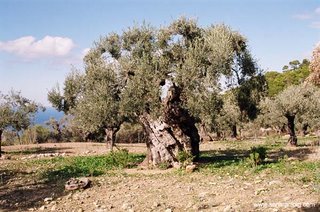Flush olive when and why ' Flush OLIVE OIL WHEN and WHY
Irrigation is an action growing nell'olivicoltura oil. To reduce costs we need to identify the critical stages of development of the olive in order to irrigate the plant at the right times and in the quantity required, no waste and maximizing results
Silvia Gentile
The Tuscan olive production is characterized by a high quality product but also from low yields per hectare. To increase their income companies must therefore aim at increased production and a simultaneous reduction of costs.
One of the main factors affecting the productivity of oil and water availability in the soil and, contrary to what one might expect, the benefits from procurement of water are of great interest in the central and northern parts of the center our country.
Studies to date show a clear increase in yield per hectare resulting from irrigation (about 30%), but have not yet clarified the causes and effects that this intervention has on the quantity and quality oil. The study of the physiology of the fruit is therefore particularly important to understand and take full advantage of the benefits by the contribution idrico.Dal botanical standpoint the olive is a drupe, and the tissues that compose it are the exocarp (peel), the mesocarp (pulp) el'endocarpo (stone). Of these, the mesocarp is the most important commercially, both because it is the edible part in olives from the table, both because it represents the area of \u200b\u200boil accumulation (95% oil is found within this tissue).
when the crop completes its development, the mesocarp is about 60% of the total wet weight of the olive.
The effects of irrigation on the development of the fruit, have been investigated in 2001 in an intensive olive grove located in the town of Bibbona (LI) consists of two main varieties of Tuscan Frantoio and Leccino bred " Monocaule open canopy. "During the test were made compared within each cultivars, plants irrigated with non-irrigated plants. The amount of water given to the irrigated plants was determined by calculating actual evapotranspiration (Penman-FAO equation Kc = 0.55), the sum of water transpired from the plant and evaporated from the soil. The water status of plants under test was determined periodically by measuring leaf water potential (ψw), which are used to determine the amount of water present in the tissues of plants.
During the test, we evaluated the effects of irrigation on fruit growth parameters (dry weight, fresh weight and volume), on cellular processes responsible for the increased the mesocarp (division and cell expansion) and accumulation of oil in the mesocarp. All data were then analyzed statistica.I results of these tests have found an effect of irrigation on both the final size of the fruit on the accumulation of oil.
fruits belonging to the irrigated plants showed, in both cultivars, a greater fresh weight, dry weight, volume and surface area, measured in the central portion of the fruit (equatorial cross-sectional area).
The increase of the cross-equatorial mesocarp was caused principally from the average size phones, and to a lesser extent acted to increase the number of cells. The presence of more cells' large in the mesocarp may allow the accumulation of greater amounts of oil, but during this test, there were no significant differences in oil content among fruits belonging to the two treatments (irrigated and non irrigated "). In this connection it must be remembered that the oil content in the fruit comes dall'inolizione, a process of accumulation of oil, which occurs in the terminal stages of development of the olive. The heavy rainfall last autumn that characterized the trial explain the high oil content found Fruits also in non-irrigated plants, and therefore the absence of appreciable differences compared to the fruits of irrigated plants.
In conclusion, the irrigation has resulted in both cultivars increased the average size of fruit and fruit load per tree, thus going to lead to increased yield per hectare. The availability of water and 'seemed also responsible for increasing the average size of cells of the mesocarp, which is not followed, however, an appreciable increase in oil fruits.
Data for this test, although preliminary, seem to encourage the use of irrigation not only to increase yields per hectare, but also to increase the amount of oil in the olives, recent evidence also suggests a positive effect of water intake on the quality of the oil.
Relying on practices such as irrigation changes the quality and quantity of production, would represent an important Italian olive growing, increasingly menaced by the appearance on the market of cheap products from abroad.
Published
